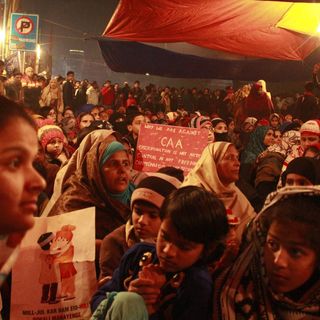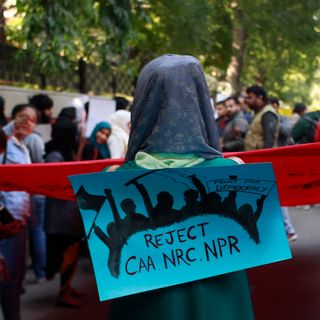
In India, More Men Get to Access and Consume Electricity Than Women: Study
Access to electricity increases productive time for work and study, ultimately improving employment prospects.

Researchers trying to study the link between energy access and gender equality in India found that as households start to get electrified, the use and consumption of electricity is dominated by men. Published in Nature Sustainability, the study concluded that men end up benefiting more than women from electrification — even though women need access to electricity just as much and arguably even more.
Previous studies have shown that electrification is not only important for women to be able to conduct household chores with ease, but it can also affect women’s levels of productivity in multiple ways. For women, especially in rural areas, household electrification ensures improvements to their health through cleaner indoor air because they no longer have to rely on candles or kerosene lamps that emit high amounts of pollutants harmful for human health to satisfy their illumination needs. Electricity in the house also ensuresbetter nutrition and food safety due to improved refrigeration. “Basic interior and exterior lighting in villages also means improved security for women, enabling greater mobility to engage in productive activities under safe conditions,” writes a team of gender and economic strategy consultants from Deloitte for The Atlantic.
For the current study, researchers categorized common appliances according to their pattern of use – whether they were used more by men, women (for example, sewing machines, mixer grinders) or used equally by both genders. Based on this categorization, they found households to have more appliances used by men than women.
But the inequity existed even in neutral appliances such as light bulbs or fans. For instance, the poorest households were found to have multiple bulbs and fans, but they were rarely found in kitchens or places women needed to access more.
While studying the pattern of electricity use based on whose income – whether men’s or women’s – ran the household, researchers noticed a clear difference. In those that were run by women‘s income, bulbs and fans were also found in the kitchen; otherwise, bulbs were absent in the kitchens of households run by men’s income.
“These results show that women will choose to use electricity differently than is typical in male-led households, and how male-female power differences in this context influence electricity use patterns,” the researchers said in a press release.
Related on The Swaddle:
Women Who Face Sexism Are Three Times More Likely to Suffer from Poor Mental Health
Even the passage of time didn’t make it any easier for women. Researchers found households continued having more appliances used by men than appliances used by women even a decade after first receiving electricity. It was even true even for households higher on the socioeconomic scale.
“Access to electricity is a necessary precondition to achieving many development goals,” Paulina Jaramillo, professor of engineering and public policy at Carnegie Mellon University, who conducted the research, said in a press release. “But it is not a sufficient one to help developing countries overcome social norms that can drive who benefits from development.”
Women need access to electricity and equal share in its consumption for reasons more than it helps them with household chores. Women with access to energy were more likely to be employed than those without, per Deloitte’s analysis for The Atlantic. For example,women with a washer were 6.4% more likely to be employed than those without a washer. “…Initial access to electricity is most often used for lighting, which in turn increases productive time for work and study, contributing to improved education outcomes and thus to women’s prospects for employment and advancement,” stated the article.
To tackle this gender inequity in accessing and consumption of energy, it’s important that policymakers and suppliers look at “electrification with a gender lens as women and men have different energy needs,” writes Manjusree Banerjee, an independent consultant on energy access for the Observer Research Foundation. One way to do it would be to increase women’s representation for “developing and designing electricity access programs in gender-neutral ways.”
Anubhuti Matta is an associate editor with The Swaddle. When not at work, she's busy pursuing kathak, reading books on and by women in the Middle East or making dresses out of Indian prints.
Related


In Photos: Women and Queer Protesters Lead Anti‑NRC‑CAA March in Delhi
